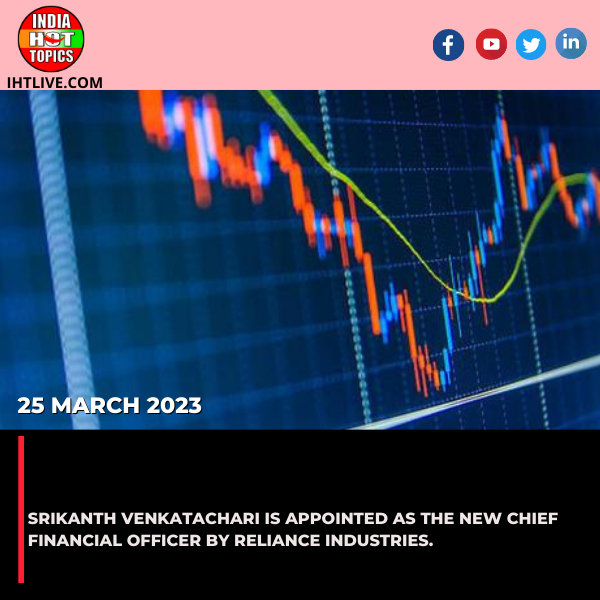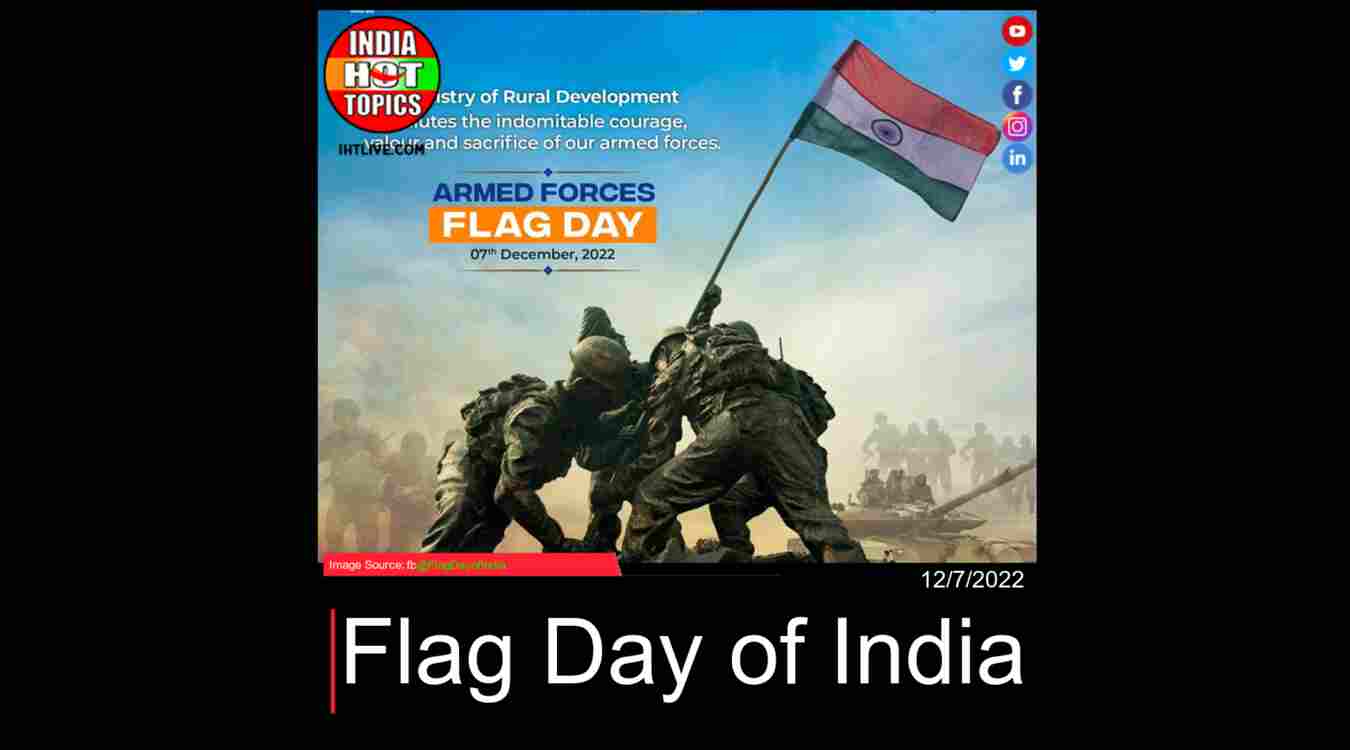India
Orange warning is in effect in 12 districts as a result of heavy rains in Kerala.

Orange Warning: Heavy Rains Trigger Alert in 12 Districts of Kerala
Kerala, known for its picturesque landscapes and lush greenery, is currently facing the wrath of heavy rains. The region is grappling with the aftermath of torrential downpours, leading to significant concerns and an orange warning being issued in 12 districts. In this blog post, we delve into the impact of the heavy rains in Kerala, the issuance of the orange warning, and the measures taken to mitigate the potential risks and damages caused by the inclement weather.
Kerala is no stranger to monsoon rains, which typically bring relief and rejuvenation to the land. However, this year, the state is experiencing an unusually intense spell of rainfall. The heavy downpours have led to overflowing rivers, waterlogging in low-lying areas, and landslides in some regions. The incessant rains have disrupted normal life, affecting transportation, agriculture, and posing a threat to human settlements.
In response to the severe weather conditions, the Meteorological Department has issued an orange warning in 12 districts of Kerala. The orange warning signifies that there is a high possibility of heavy to very heavy rainfall in the affected areas. This serves as an alert to residents, local authorities, and disaster management agencies to remain vigilant and take necessary precautions to minimize the impact of the rainfall.
The heavy rains and the subsequent orange warning have prompted various measures to ensure the safety and well-being of the residents in the affected districts. Some of the key steps taken include:
- Evacuation and Shelter Arrangements: Local authorities are working diligently to identify vulnerable areas and evacuate residents to safer locations. Adequate shelter arrangements, food, and essential supplies are being provided to those affected by the heavy rains.
- Communication and Public Awareness: Efforts are being made to disseminate timely information and warnings through various channels, including local media, social media platforms, and official government notifications. This helps raise public awareness and ensures that individuals stay informed about the prevailing weather conditions and necessary precautions.
- Emergency Response and Relief Operations: Disaster management agencies, along with local authorities, are actively engaged in emergency response and relief operations. This includes deploying rescue teams, providing medical assistance, and distributing relief materials to affected individuals and communities.
- Infrastructure Maintenance and Repair: The heavy rains often result in damages to roads, bridges, and other critical infrastructure. Timely repair and maintenance activities are being undertaken to restore connectivity and ensure the smooth functioning of essential services.
The orange warning issued in 12 districts of Kerala serves as a reminder of the challenges posed by heavy rainfall and the need for swift action to mitigate its impact. The state government, along with disaster management agencies, is working tirelessly to ensure the safety and well-being of the affected population. As the heavy rains persist, it is crucial for individuals to stay updated with the latest weather advisories and cooperate with authorities to ensure a swift and effective response to the situation. By working together, Kerala can overcome the challenges presented by these heavy rains and emerge stronger, reinforcing its resilience in the face of natural calamities.
Group Media Publications
General News Platform – https://ihtlive.com/
Entertainment News Platforms – anyflix.in
Construction Infrastructure and Mining News Platform – https://cimreviews.com/
Podcast Platforms – https://anyfm.in
India
‘India hosts G20, Pakistan hosts T20’: Sena (UBT) MP Priyanka Chaturvedi’s ‘top terrorists’ swipe at Islamabad
.jpg)
Shiv Sena (UBT) MP Priyanka Chaturvedi recently made a pointed remark contrasting India’s global leadership with Pakistan’s alleged support for terrorism. Speaking to the Indian diaspora in London, she stated, “While we host the G20, they host the T20—the top 20 terrorists of the world,” implying that Pakistan provides shelter to some of the most wanted terrorists globally.
She further criticized Pakistan’s duplicity, saying it “shakes hands with you and then bites you on your back,” referencing the discovery of Osama bin Laden in Pakistan despite its alliance with the U.S.
Chaturvedi also drew a parallel between India’s pursuit of Free Trade Agreements and Pakistan’s alleged “Free Terrorism Arrangement,” highlighting the stark differences in their international engagements. Her comments were part of a broader effort by an Indian parliamentary delegation to expose Pakistan’s purported state-sponsored terrorism on the global stage.
This rhetoric aligns with previous statements by Indian leaders. For instance, during the G20 Summit in 2017, Prime Minister Narendra Modi emphasized that “some nations are using terrorism for achieving political goals,” equating Pakistan-based groups like Lashkar-e-Taiba and Jaish-e-Mohammed with global terror organizations such as ISIS and al-Qaeda.
India’s consistent stance has been to urge the international community to isolate and sanction nations that support terrorism, advocating for a unified global response to combat the menace effectively.
In a pointed and politically charged remark, Shiv Sena (UBT) MP Priyanka Chaturvedi recently stirred debate by contrasting India’s global leadership with Pakistan’s alleged harboring of terrorism. Speaking to members of the Indian diaspora in London, Chaturvedi quipped, “India hosts the G20, Pakistan hosts the T20—the top 20 terrorists of the world.” While wrapped in wit, the statement reflects a broader and long-standing diplomatic contention between India and Pakistan over the issue of cross-border terrorism.
India, under Prime Minister Narendra Modi’s leadership, has increasingly positioned itself as a global economic and strategic player. Its hosting of the G20 summit in 2023 was seen as a landmark moment, not only diplomatically but also symbolically. India showcased itself as the voice of the Global South, a nation committed to sustainable development, digital innovation, and multilateral cooperation.
In stark contrast, Chaturvedi’s barb underscores India’s frustration over Pakistan’s alleged inaction against terrorist networks operating within its borders—a concern that has been echoed in international forums.
The “T20” remark, while humorous in form, is a critique of the perception that Pakistan continues to serve as a safe haven for individuals and organizations involved in terrorism. For decades, New Delhi has maintained that Pakistan-based groups like Lashkar-e-Taiba, Jaish-e-Mohammed, and others have orchestrated attacks on Indian soil, including the 26/11 Mumbai attacks and the 2019 Pulwama bombing. Chaturvedi’s statement aligns with this narrative, essentially accusing Pakistan of continuing to shelter elements that threaten regional stability.
The international community has taken note of these allegations. Multiple global bodies, including the Financial Action Task Force (FATF), have placed Pakistan under scrutiny. Although Pakistan was removed from the FATF’s “grey list” in 2022 after making certain legislative and financial reforms, many believe that the underlying infrastructure of extremism still finds space in parts of the country. Indian leaders have consistently pointed to this as a security threat not just for India, but for the wider world.
What adds to the irony, and perhaps the bite, of Chaturvedi’s comment is the use of the “T20” term—normally associated with a popular format of international cricket.
Cricket is a shared passion between India and Pakistan and often serves as a tool of diplomacy and people-to-people contact. Yet here, the term is used to convey an ominous message, repurposed to signify terrorism rather than sport. It reflects how deeply entrenched the issue of terrorism has become in bilateral relations between the two neighbors, to the point that even cultural metaphors are drawn into the fray.
Her statement also speaks to the growing confidence of India’s political class in taking a firm, often vocal, stand on international platforms. Gone are the days when Indian leaders shied away from publicly naming Pakistan in global settings. Today, Indian representatives, whether at the United Nations, G20, or bilateral meetings, are direct in their language. Chaturvedi’s speech to the Indian diaspora fits into this larger strategic posture: vocal, assertive, and unapologetic.
Critics may argue that such rhetoric contributes little to actual diplomatic resolution and could exacerbate tensions. But supporters see it as a necessary counter-narrative to what they view as Pakistan’s continued denial of its role in sponsoring or turning a blind eye to terrorism. For the Indian diaspora—particularly in Western countries—such remarks often serve to rally support, both emotionally and politically, for India’s position on security and foreign policy matters.
Furthermore, Chaturvedi’s allusion to Osama bin Laden’s presence in Abbottabad, Pakistan, is a reminder of past controversies. The fact that the world’s most wanted terrorist was found living in a compound near a major military academy in Pakistan shocked global observers. That episode has become symbolic of the suspicions many hold regarding Pakistan’s internal contradictions—fighting terrorism in some quarters while allegedly enabling it in others.
Chaturvedi didn’t stop at the T20 analogy. She also drew a comparison between India’s pursuit of Free Trade Agreements (FTAs) and what she termed Pakistan’s “Free Terrorism Arrangement.” It’s a biting turn of phrase meant to emphasize the contrasting paths the two countries have taken on the global stage. While India negotiates trade deals and pushes economic growth, the insinuation is that Pakistan has allowed itself to become entangled in a network of extremist patronage and international suspicion.
These rhetorical flourishes are not made in a vacuum. They reflect a domestic political climate in India where national security remains a top priority. With general elections approaching, and with nationalistic sentiment often influencing electoral behavior, such statements serve both foreign and domestic policy objectives. They reinforce the narrative of a strong India standing up to global threats, and they appeal to voters who prioritize national integrity and security.
However, the use of such language also raises questions about diplomatic tone. While sharp rhetoric can capture headlines and galvanize public opinion, it may limit the space for back-channel diplomacy and peaceful negotiation. India and Pakistan, after all, remain nuclear-armed neighbors with a complex history. They share borders, cultural ties, and economic potential that are frequently overshadowed by their political disagreements.
Chaturvedi’s comments should also be viewed in light of increasing efforts by India to shape global perceptions. Indian diplomacy is now intertwined with strategic communication, where narratives are as important as negotiations. Terms like “Terroristan” and “T20 terrorists” are part of a larger toolkit of persuasive language aimed at influencing how the world sees South Asia’s security challenges.
It is also worth noting that such messaging often resonates with international audiences who have themselves been affected by terrorism. Countries in the West that have faced attacks on their soil may find a natural ally in India’s tough stance. Thus, Indian leaders—parliamentarians, diplomats, and ministers alike—are increasingly comfortable invoking sharp, memorable phrases to drive home their point.
In the end, Chaturvedi’s “G20 vs T20” statement is emblematic of a broader geopolitical reality. It highlights the competing narratives of two neighboring nations with vastly different global aspirations. India seeks to be a rule-maker in the global order, advocating for cooperation, innovation, and economic integration. Pakistan, on the other hand, finds itself battling persistent accusations of terrorism support, struggling to reshape its global image despite efforts at reform.
Whether such rhetoric will lead to constructive change remains to be seen. But one thing is clear: the verbal sparring between India and Pakistan is no longer limited to official statements. It now occupies global stages, diaspora gatherings, and international media, shaping public perception in ways that formal diplomacy often cannot. Chaturvedi’s comments are just one example of how political messaging, laced with satire and criticism, has become a powerful tool in the evolving India-Pakistan relationship.
- Group Media Publication
- Construction, Infrastructure and Mining
- General News Platforms – IHTLive.com
- Entertainment News Platforms – https://anyflix.in/
India
Shreyas Iyer plays an all-time great knock, PBKS set up final against RCB to ensure a new IPL champion

In a pulsating, high-octane clash that will be etched in IPL folklore for years to come, Shreyas Iyer produced an innings of a lifetime, a masterclass under pressure that not only salvaged his side from the brink but also powered them into their first-ever Indian Premier League final, where they will now face Royal Challengers Bangalore in a historic showdown that guarantees a brand-new champion. The Eden Gardens roared in collective disbelief and admiration as Iyer, the steely-eyed right-hander, unleashed a knock that defied the odds, silenced doubters, and revived his team’s fortunes in a match that looked lost at several junctures.
Chasing a daunting total set by Rajasthan Royals in Qualifier 2, the Punjab Kings were reeling at 45 for 4 when Iyer walked in, amid a flurry of wickets and a growing sense of inevitability. But the Delhi-born batter had other ideas. Combining surgical precision with fearless aggression, Iyer stitched together a majestic 112* off just 61 balls, blending classical strokeplay with inventive shot-making. His ability to pierce the gaps, manipulate field placements, and accelerate with grace underlined his evolution as a big-match player.
The pivotal moment came in the 16th over, when Iyer launched into seasoned pacer Trent Boult with back-to-back sixes and a scything cover drive that shifted the momentum irreversibly in Punjab’s favor. From there, the equation melted down under the sheer weight of Iyer’s calm, calculated assault. Supported briefly by Jitesh Sharma and a spirited cameo from Liam Livingstone, the innings was undeniably Iyer’s canvas, painted with strokes of resolve, maturity, and brilliance.
The PBKS dugout erupted as he sealed the victory with a towering six over long-on, punching the air as teammates swarmed the field, finally breaking their playoff jinx and marching into the final with renewed belief. It was a tale of redemption for Iyer too, who had faced criticism earlier in the season for inconsistency but timed his resurgence perfectly, rising when it mattered most. Meanwhile, Royal Challengers Bangalore, having dispatched tournament favorites Kolkata Knight Riders in Qualifier 1, wait eagerly at the other end of the draw for what will be their fourth final — and like PBKS, a potential maiden title.
With both teams historically known more for their heartbreaks than their hardware, the upcoming final is more than just a match; it’s a promise of new beginnings, a shot at legacy.
Fans across the country are bracing for a titanic clash of two squads brimming with talent and desperation in equal measure. For PBKS, the triumph in the semifinal is emblematic of their season — erratic yet exhilarating, chaotic but courageous.
Led ably by Sam Curran, whose tactical acumen and all-round contributions have been central to the team’s resurgence, Punjab have found late-season form that makes them a legitimate threat. Add to that the form of Jonny Bairstow, the X-factor of Livingstone, and a quietly effective bowling core anchored by Arshdeep Singh and Rahul Chahar, and PBKS look like a side peaking at just the right time.
RCB, on the other hand, are riding on a wave of Virat Kohli’s vintage brilliance, Faf du Plessis’s calm leadership, and a bowling attack spearheaded by Mohammed Siraj and Karn Sharma that has outperformed expectations. The final promises a showdown between two explosive batting line-ups, smart captains, and passionate fanbases who have waited for this moment for over a decade.
But on this night, it was all about Shreyas Iyer — his timing, temperament, and tenacity. The innings wasn’t just about boundaries and numbers; it was about soaking pressure, rewriting narratives, and showing the cricketing world the value of composure in chaos.
As fireworks lit up the Kolkata sky and the crowd chanted his name, Iyer stood with his bat raised, soaking in the adulation, knowing he had just played one of the greatest knocks in IPL knockout history. In a tournament that has seen legends rise and fall, Shreyas Iyer’s heroics will now be remembered as a defining act, the very heartbeat of Punjab Kings’ dream run.
Now, with destiny within touching distance, PBKS and RCB are set to battle not just for a trophy, but for validation, for history, and for that elusive crown that has remained just out of reach for too long.
- Group Media Publication
- Construction, Infrastructure and Mining
- General News Platforms – IHTLive.com
- Entertainment News Platforms – https://anyflix.in/
India
US B1/B2 visa wait time exceeds 1 year for Indians: Report

Despite the US fully resuming visa operations, demand for tourist and business (B1/B2) visas continues to exceed available appointment slots, creating major backlogs across US consulates in India. Wait times in Hyderabad, Delhi, Mumbai, and Chennai range from 7.5 to 13.5 months, with Chennai facing the longest delay at 13.5 months. These prolonged delays are disrupting.
Travel for family functions, weddings, business events, and emergencies. Priority appointments remain limited, offering little relief even in urgent cases. Business professionals are among the worst hit. With no clear or predictable appointment system, applicants are left checking the portal repeatedly without success, making travel planning extremely difficult.
The US has announced visa restrictions on owners, executives, and senior officials of Indian travel agencies accused of knowingly facilitating illegal immigration to the United States. Mission India’s Consular Affairs and Diplomatic Security Service work daily across the embassy and consulates to identify and target those involved in illegal immigration, human.
Indian applicants seeking U.S. B1/B2 visas are encountering unprecedented delays, with wait times now extending beyond a year in several major cities. This situation is significantly impacting travel plans for business, tourism, and personal emergencies.
Extended Wait Times Across Major Cities
- Chennai: 13.5 months
- Delhi: 9 months
- Mumbai: 9.5 months
- Hyderabad: 7.5 months
These prolonged delays are causing applicants to miss critical events such as weddings, business conferences, and family gatherings. For instance, a homemaker planning to attend her nephew’s wedding in August found the earliest available appointment was in March of the following year, rendering her unable to attend.
Impact on Travelers
The extended wait times are affecting various categories of travelers.
- Business Travelers: Professionals are facing challenges in attending international conferences and meetings, leading to potential financial losses and missed opportunities.
- Tourists: Individuals planning leisure trips are forced to postpone or cancel their plans due to the unavailability of timely visa appointments.
- Family Emergencies: Applicants aiming to visit the U.S. for urgent family matters, such as childbirth or medical emergencies, are unable to secure appointments in time.
While students and emergency travelers are given limited priority slots, general applicants looking to visit family, attend events, or explore travel opportunities.
Underlying Causes
Despite the U.S. fully resuming visa operations, the demand for tourist and business (B1/B2) visas continues to far exceed available appointment The U.S. Department of State acknowledges these delays and advises applicants to plan their travel well in advance. They also suggest that applicants regularly check the appointment scheduling system for any earlier slots that may become available due to cancellations.
Recommendations for Applicants
- Early Planning: Initiate the visa application process as early as possible to accommodate potential delays.
- Regular Monitoring: Frequently check the appointment scheduling system for any earlier slots that may open up.
- Consider Interview Waivers: Applicants renewing their visas or meeting specific criteria may be eligible for interview waivers, potentially expediting the process.
- Stay Informed: Keep abreast of updates from the U.S. Embassy and Consulates regarding visa processing times and appointment availability.
The prolonged wait times for U.S. B1/B2 visas are causing significant disruptions for Indian travelers. Applicants are advised to plan ahead, explore all available options, and remain patient as they navigate the visa application process
Indian applicants for U.S. B1/B2 visas are facing unprecedented delays, with wait times now exceeding one year in major cities. Chennai reports the longest delay at 13.5 months, followed by Delhi and Mumbai at approximately 9 to 9.5 months, and Hyderabad at 7.5 months. These prolonged wait times are disrupting travel plans for family events, business engagements.
- Group Media Publication
- Construction, Infrastructure and Mining
- General News Platforms – IHTLive.com
- Entertainment News Platforms – https://anyflix.in/
-
Tech4 months ago
Best Zebronics Bluetooth speakers you can buy today for an unmatched audio experience
-

 India2 years ago
India2 years agoNew Season 8 The Walking Dead trailer flashes forward in time
-

 India2 years ago
India2 years agoThe afternoon briefing revealed that 97.26% of the ₹2000 notes were returned, and the Israeli Prime Minister committed to war goals.
-

 World12 months ago
World12 months agoMichigan splash pad attack: A couple was shot seven times in total while defending their two small daughters.
-

 India2 years ago
India2 years agoSrikanth Venkatachari is appointed as the new chief financial officer by Reliance Industries.
-

 India2 years ago
India2 years agoPM Modi’s Three-Nation Tour Begins with a Traditional Welcome in Papua New Guinea
-

 Special 365 days2 years ago
Special 365 days2 years agoFlag Day of India
-

 India8 years ago
India8 years agoThe 9 worst mistakes you can ever make at work








.jpg)
%20(1).jpg)